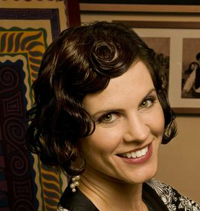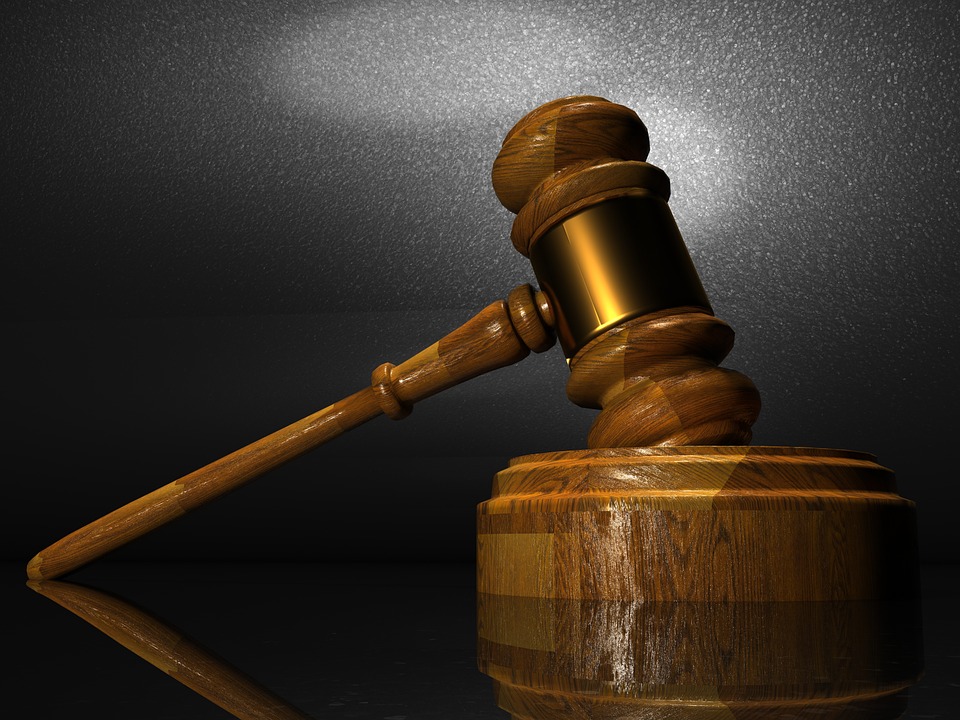Could a patent infringement case that has the deep-fryer industry sizzling really have a chilling effect on software development? That’s the claim made by Columbia Law School’s Eben Moglen, who said the U.S. Supreme Court’s forthcoming decision in the Global-Tech Appliances v. SEB dispute could stifle innovation and impede progress.
“Merely by writing software, a developer might become vulnerable to an inducement claim; the patentee would only need to allege some vague awareness of neighboring patents,” Moglen wrote in an amicus brief to the court. “If contributing to a free software project exposes the contributor to uncertain risk, fewer will contribute, producing less incremental improvement and innovation for the public’s benefit.”
The problem hinged on a deep-fryer design that was reverse-engineered from a patented model. The company subsequently handed blueprints to a patent lawyer and asked for a search to make sure it did not infringe an existing patent—leaving out the crucial detail that the appliance had, in fact, been derived from another. The patent search was unsuccessful, the fryer went to market, and the company whose model it was based on sued. The debate now focuses on United States Code 271(b) (“Whoever actively induces infringement of a patent shall be liable as an infringer”), and whether willful blindness or actual knowledge of a preexisting intellectual property claim determines liability.
“Didn’t we take this case to determine whether or not deliberate indifference is the standard?” asked Justice Kennedy during a Supreme Court session on Feb. 21.
Chief Justice John Roberts asked, “I don’t think it’s true with deep fryers, but in some areas, you almost always know you’re going to hit something, that given the nature of the industry, you’re going to infringe something. Is that enough?”
In the semiconductor industry, there are some 420,000 patents, making it next to impossible to ensure there won’t be a patent infringement, it was noted. “That is very, very true, Your Honor,” replied the counsel for Global-Tech Appliances. “And even in the deep-fryer industry, it is going to be different, because there’s very few—I mean, compared to semiconductors…”
“Well, we’re not going to adopt a special rule for the deep-fryer industry,” quipped Justice Antonin Scalia to courtroom laughter.
“I think Moglen may have overreacted,” said Michael Barclay, a fellow at the Electronic Frontier Foundation in San Francisco who does volunteer work writing amicus briefs for the organization. “I was surprised they granted cert in this case. This case is kind of fact-specific for Global Tech. There aren’t a lot of inducement cases that trigger on this level of knowledge.”
Indeed, he said, the 2006 DSU Medical v. JMS case settled the issue clearly with a high standard for inducement that requires prior knowledge of the patent.
“This case is saying you don’t have to have intentional knowledge; if you’re reckless and don’t check to see if there’s an existing patent, you could be liable,” said Vincent LoTempio, a Buffalo, N.Y.-based patent attorney. “The whole idea of a patent system is for ideas to be freely distributed. But the more restraints they put on it, the less likely people are to get patents. I don’t know if you’ve ever searched for a patent before, but for software, it’s especially challenging.”
A lesser standard could lead to more litigation in a field already teeming with lawyers, according to LoTempio. “Any time you make a more stringent, nit-picky rule, it gives an opportunity for someone to start a lawsuit. But I still think that if someone is inducing someone else to infringe, they should be stopped. Because otherwise people will think, ‘I shouldn’t get a patent if it can’t be enforced.’ ”
The source code conundrum
This isn’t the only patent case on the Supreme Court’s docket, however. EFF is one of nearly a dozen filing “friend of the court” briefs on behalf of Microsoft in its case against i4i “to call the Court’s attention to the disproportionate impact that the Federal Circuit’s improper standard of proof has had for two important innovation communities: Free and Open Source Software (“FOSS”) projects and small software innovators generally.”
While Barclay isn’t convinced the outcome of the deep-fryer fiasco is critical to the software industry, he said, “The Microsoft case deals with something that comes up in every single patent case, which is how hard it is to prove that a patent is invalid.”
Currently, when a defendant is accused of infringing a patent, the Federal Circuit requires “clear and convincing” evidence that that patent is illegitimate and the case against it unfounded. This is more rigorous than the standard of proof for most civil cases, which is a “preponderance of the evidence”—or a showing that more likely than not the allegations are true. i4i has claimed that Microsoft’s Word application violates its patents covering how XML is handled.
In software cases, “clear and convincing” evidence of patent invalidity can be hard to come by, as source code is constantly changing over the life of a product and much of the original code is often unavailable. “Plaintiffs often argue that the original source code is a necessary part of ‘clear and convincing’ evidence,” said Barclay. This is a particular problem with free and open-source software, as the collaborative nature of the projects makes documentation even harder. Further, patent owners can use the alleged infringer’s current source code in discovery to prove infringement. Meanwhile, software patents themselves need not include source code, but merely functional description.
Too many torts
It’s been less than 20 years since the Federal Circuit expanded the definition of patents to include software, and in that time IBM has accumulated nearly 6,000 patents, more than any other company in America. Since the formation of the Federal Circuit in 1982, the number of patents issued has mushroomed, along with patent lawsuits. The extreme cost of years-long IP litigation acts as a major tax on software innovation, especially for small shops, the EFF posits.
Chewing on the question of whether software should be patented in the first place is a popular pastime (see Moglen’s views, or the recent debate among the Free Software Foundation, a patent attorney and a venture capitalist held at the Churchill Club in Mountain View, Calif.). A rollback seems unlikely at this juncture, however. And many argue, as LoTempio does, that the value of patenting IP is enhanced innovation and scientific openness rather than secrecy.
“Before patents,” wrote author Paul Graham in an essay on the topic, “people protected ideas by keeping them secret. With patents, central governments said, in effect, if you tell everyone your idea, we’ll protect it for you. There is a parallel here to the rise of civil order, which happened at roughly the same time… Patents, like police, are involved in many abuses. But in both cases, the default is something worse. The choice is not ‘patents or freedom?’ any more than it is ‘police or freedom?’ The actual questions are respectively ‘patents or secrecy?’ and ‘police or gangs?’ ”
But the proliferation has created an ugly trade: so-called patent trolls, such as, allegedly, i4i, which EFF names as an example of a firm using patents not to produce goods but to extort licensing fees. The Supreme Court’s hearing on the Microsoft matter could produce a ruling that would reduce the burden on software defendants of proving a troll’s claims invalid.
Patent reform: It’s the judiciary, stupid
As these cases come before the high court, many are wondering whether the legislative patent reform sponsored by Sen. Patrick Leahy (initially in 2006) will finally come to pass. President Obama has publicly urged progress on the bill, which—for the first time in its history—has made it out of committee and is being debated on the Senate floor.
Lobbying groups representing IT interests (including Apple, Intel and others) have a dog in the fight. But few pundits are holding their breath. Part of the problem is the breadth of the bill, which contains roughly a dozen major changes to the patent system and, if passed, would represent the largest overhaul in 60 years.
“The patent bill is 100 pages long; I don’t know why they don’t go after it one part at a time so you don’t have to get every senator to agree on 100 different things,” said LoTempio, who has blogged extensively about the patent reform bill, among related issues, for years.
Ultimately, legislative reform may be moot, said EFF fellow Barclay. “The fact is, about six years ago, the Supreme Court started looking at a lot of these cases carefully, and then the Federal Circuit started looking more carefully. The result has been judicial patent reform.”
Cases such as KSR v. Teleflex made it easier to prove a patent obvious, Barclay said, while the 2010 Bilski vs. Kappos decision upheld the tricky concept of business method patents.
But is the judicial branch up to the challenge? “I think the Supreme Court is a bunch of old guys who don’t understand that everything is going to be virtual eventually. You’ve got these 80-year-old guys… I don’t know if they even have computers,” said LoTempio. The machine-or-transformation test maintained in Bilski v. Kappos, for example, will be increasingly strained in the future.
“Millions and millions of people make things that are used in millions and millions of ways,” said Justice Stephen Breyer in a hearing. “And I am worried about what kind of burden we are supposed to impose on them.”
It should make for an interesting year in software patent law.






